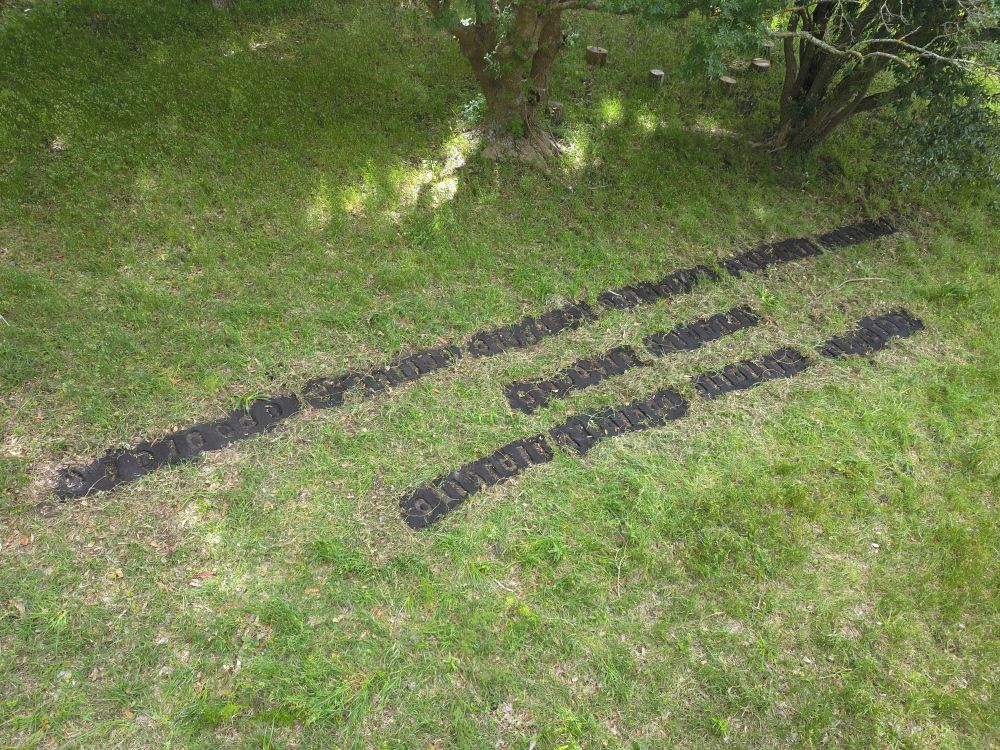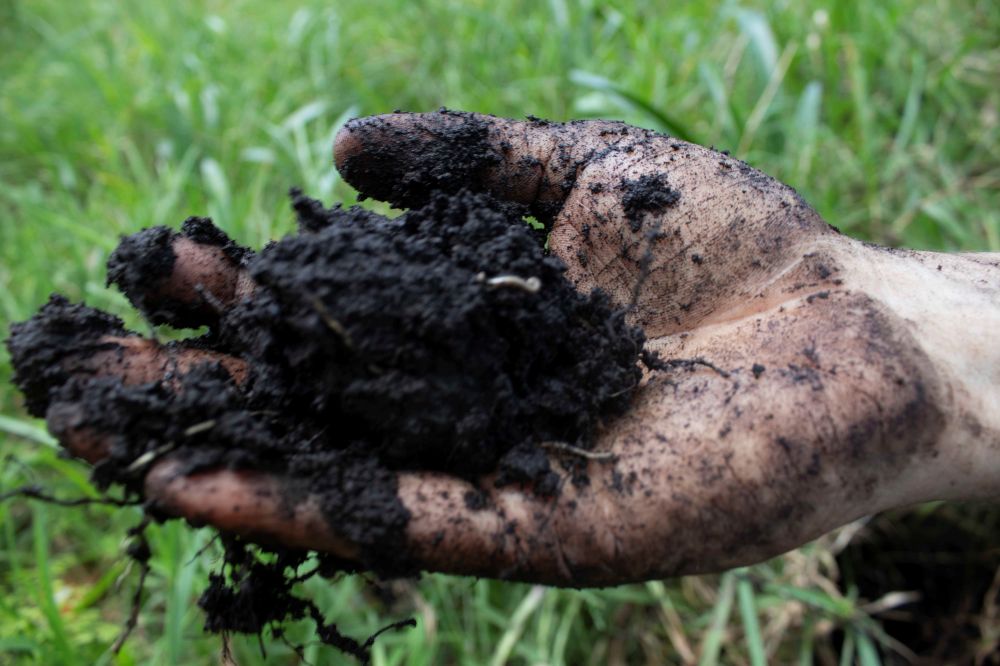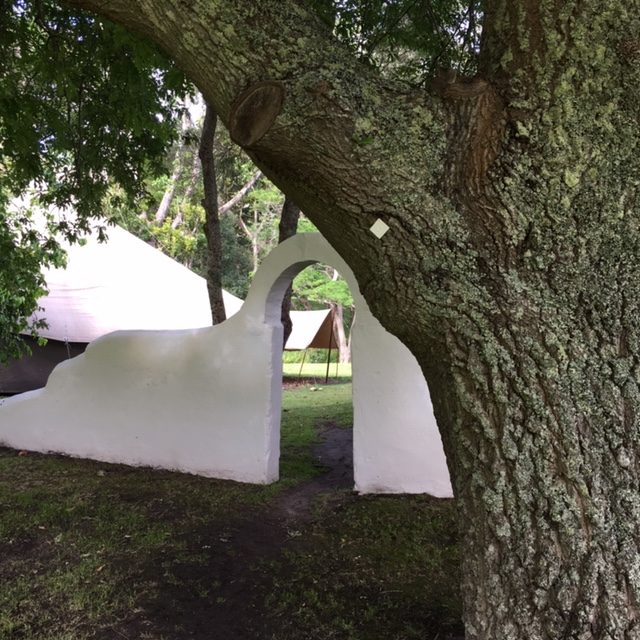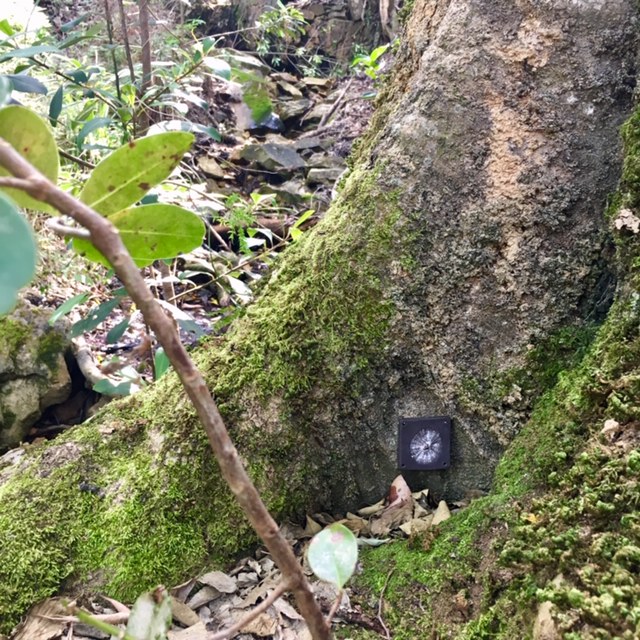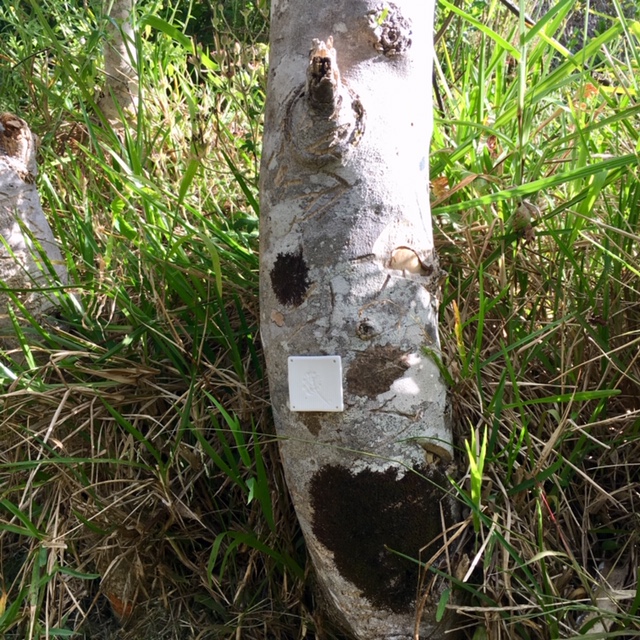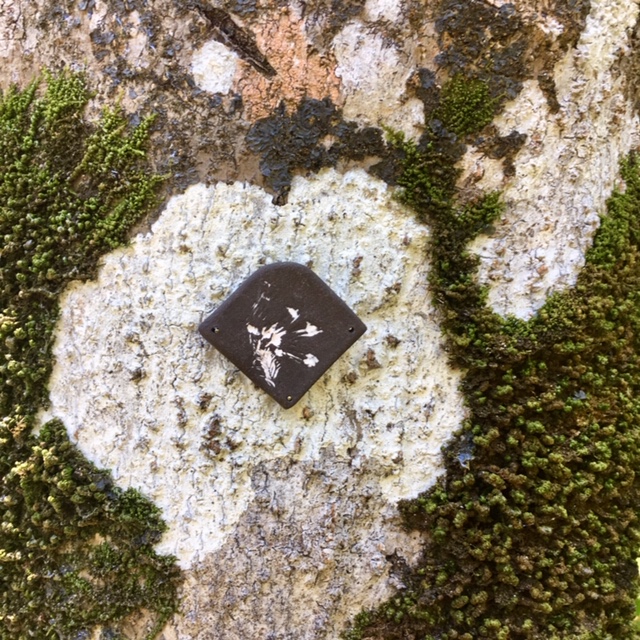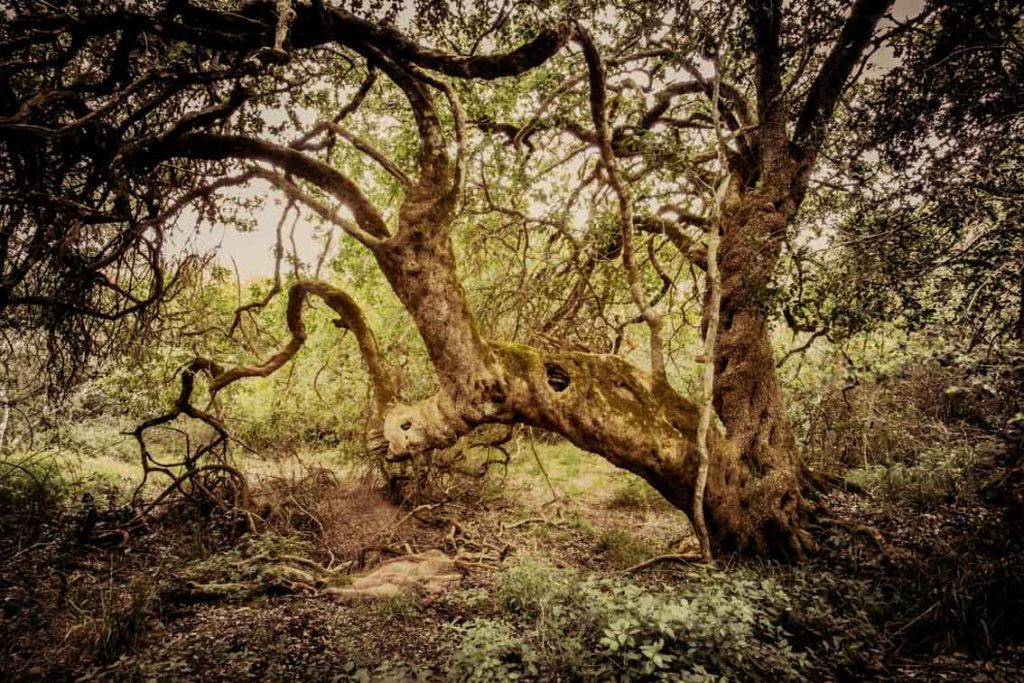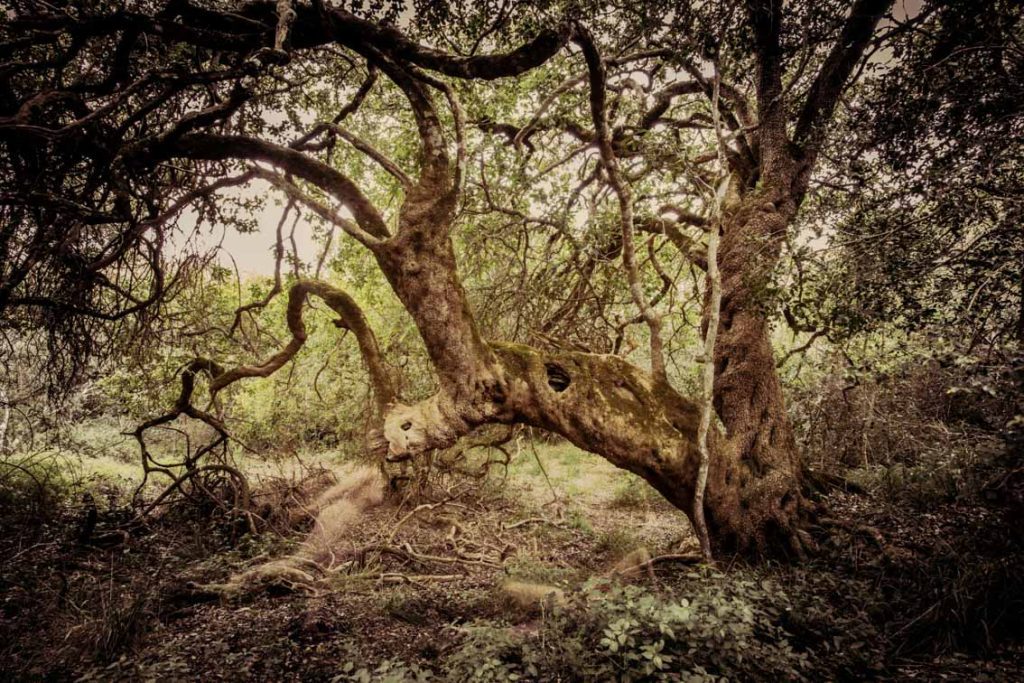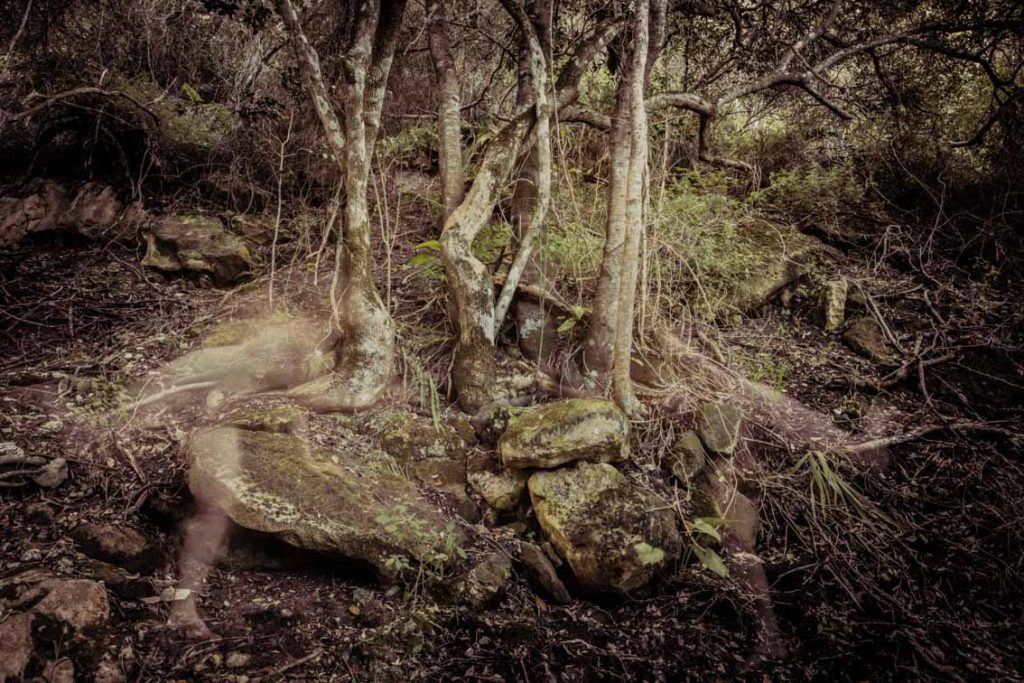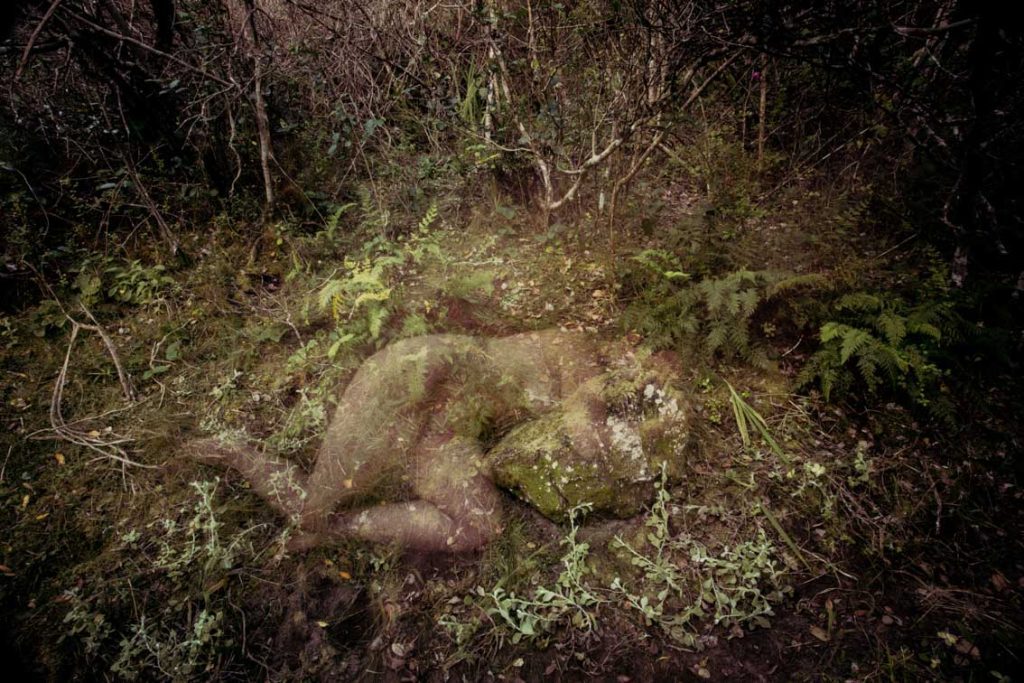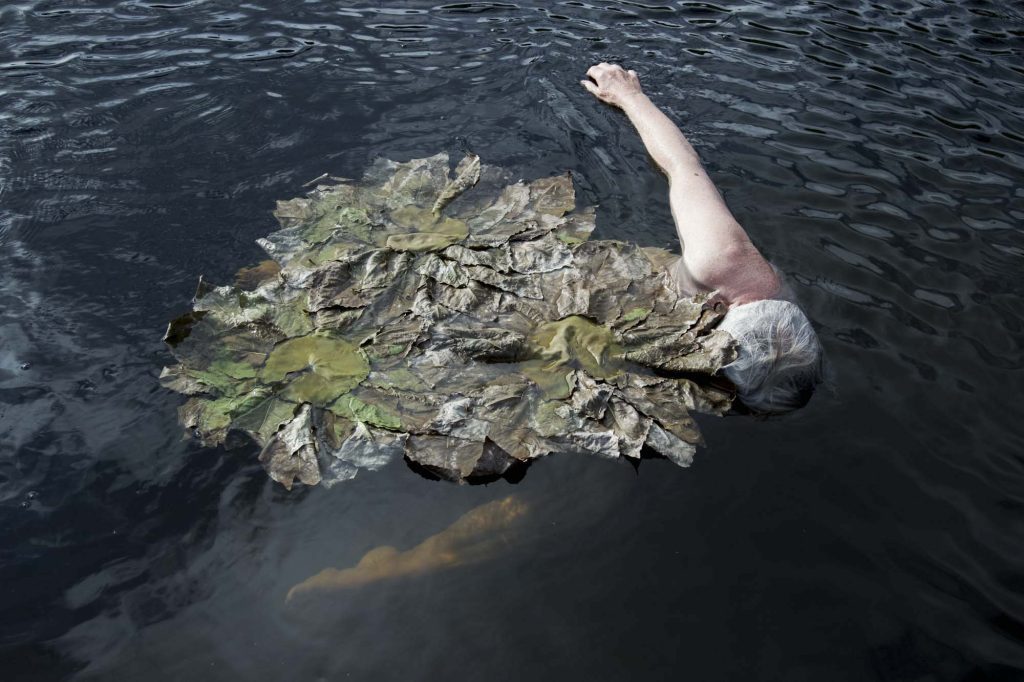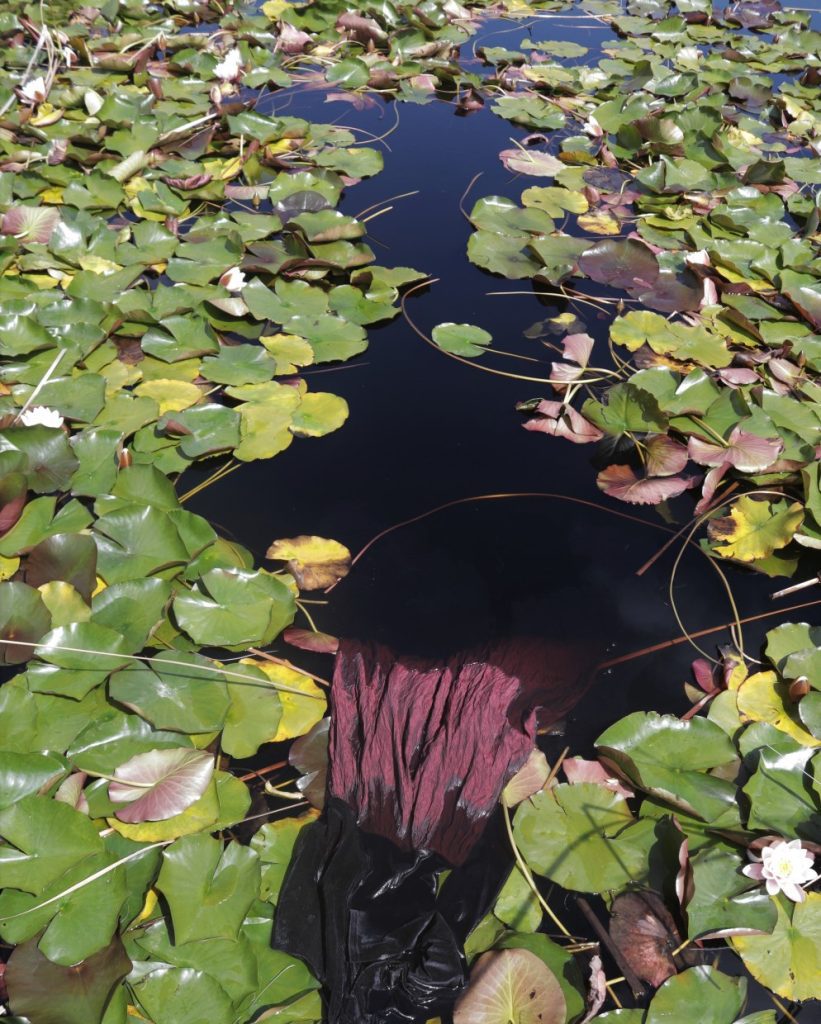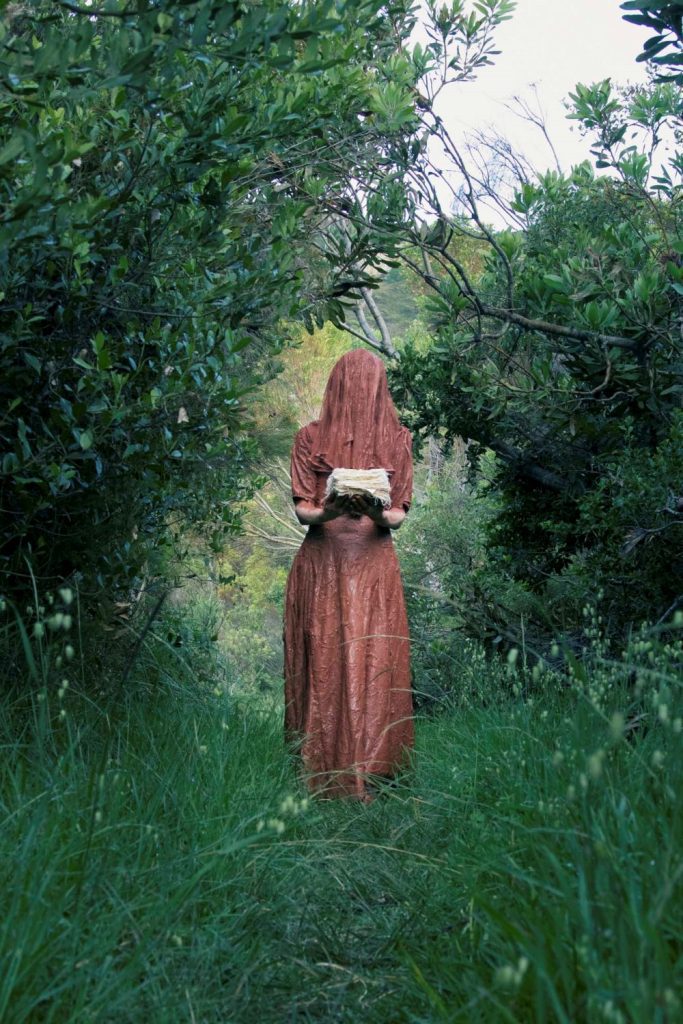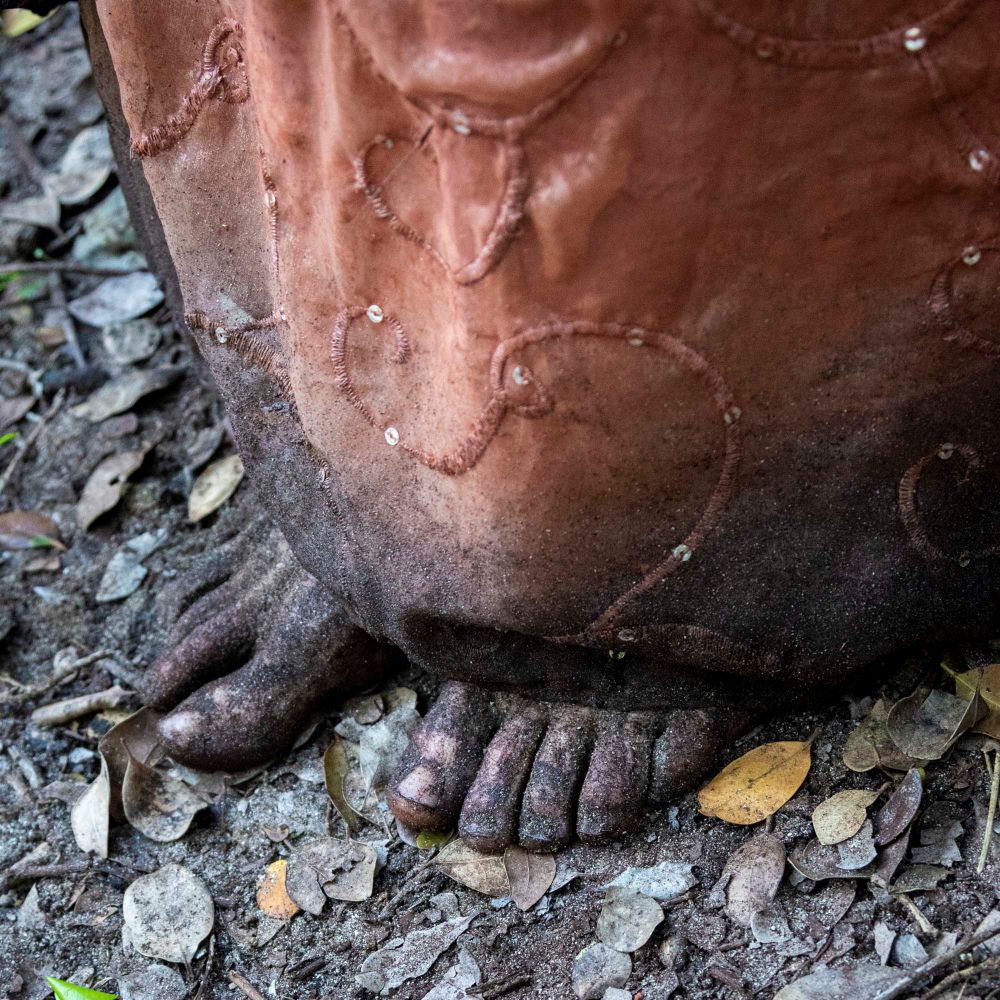November 2021
Alisa Farr
What do our machines think of us? If we create their intelligence, their learning algorithms what are we instilling in them? I wrote “please be kind” using the binary code for ASCII characters using the clay mud from Bodhi Khaya. Asking for kinship and kindness from Al machines, technology that is developed to work without our intervention, independently, our power over it is indirect and marginal once it has been put to life. A bit like children? ‘n Kind in Afrikaans? Binary code, a base 2 numerical system consisting of O’s and 1’s, is the basis of machine code. What if our artificial offspring could read this message hidden in the fast digital archive? What if this plea forms part of its learning of us and of itself?
Andree Bonthuys
The gentle, natural, beauty of Bhodi Khaya totally influenced my creativity, and I simply let it lead.
I have loved and communed with trees all my life and Bhodi Khaya is full of them! At first I was drawn to the many majestic trees around the old farmstead. I felt it was important for me to accept these stately aliens.
I have been fiercely focused on indigenous local biodiversity for some time now, but I was struck by how appropriate and pleasing these magnificent aliens were!
Accepting Aliens, the first stage of my work, involved pinning tiny porcelain tiles, imprinted with local indigenous species, onto specific, graceful, non-invasive, garden trees.
Then the natural remnant forest beckoned. Having the time and space to fully engage with the ancient, gnarled Milkwoods, White Stinkwood, Rock Alder, Hard Pear, Sea Guarrie, Wild Olive, Wild Peach, Pock Ironwood, White Pear and Bladder Nut was a soul journey. And an absolute privilege! I pinned Love Letters, tiny local species imprinted porcelain tiles, to 30 trees I especially connected with.
These Love Letters are spread throughout Bhodi Khaya and it is my hope that saunterers, walking mindfully, may come across my messages on their wanderings, and perhaps take the time to connect to those they relate to too.
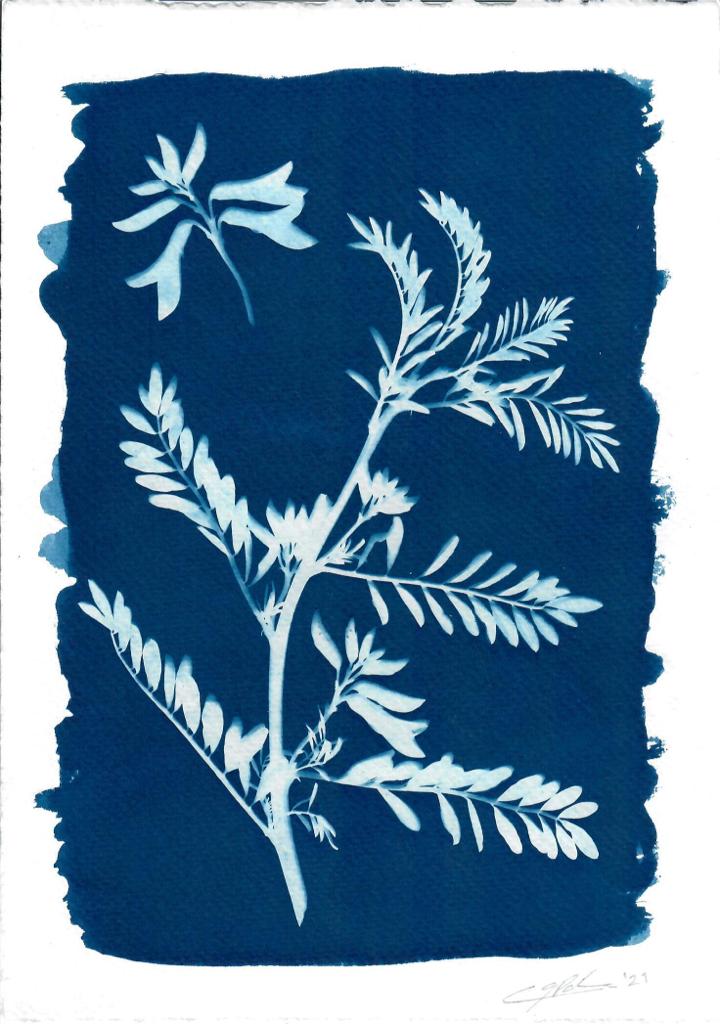

Charles Palm
Charles Palm is a South African visual artist & designer. Palm often harnesses light and natural-/site specific elements as primary medium in his work.
Kali van der Merwe
A State of Nature
The forest where these images were created is a remnant forest, a fragment of the once majestic forests that populated Southern Africa millions of years ago before being subsumed by the more hardy fynbos. It is situated within a coastal belt of the Southern tip of the African continent, an area that is being recognised as the birthplace of humankind’s ancestry and cultural modernity. The world’s oldest abstract art dating back 70 000 years has been discovered within this belt at Blombos Cave.
Presently this precious sliver of forest survives precariously as an endangered eco system, threatened by; irregular rainfall, scorching summers, fires from neighbouring farms, quad bike enthusiasts and invasions from alien vegetation.
I insert myself into this delicate balance, vulnerable in my stripped state echoing the forest’s fragility.
Visual osmosis occurs through my permeable skin. My presence is translucent as I find ecstatic communion with the arboreal world, allowing it to penetrate me. I merge and boundaries are blurred. My presence speaks to the inherent immateriality of matter and the longing for union – with nature, with my own deeper nature.
My transient flesh, contrasts with the forest’s solid longevity – thousands years, far beyond any human lifespan.
My images have no course with digital manipulation. I effect my creative engagement through solitary, intuitive performance in location. For composition, I rely on the camera’s time-space compression, where chance plays a significant role.
The forest is living memory of plant and human evolution and their interdependence. I draw inspiration from this, holding a space of exchange.
Kali van der Merwe
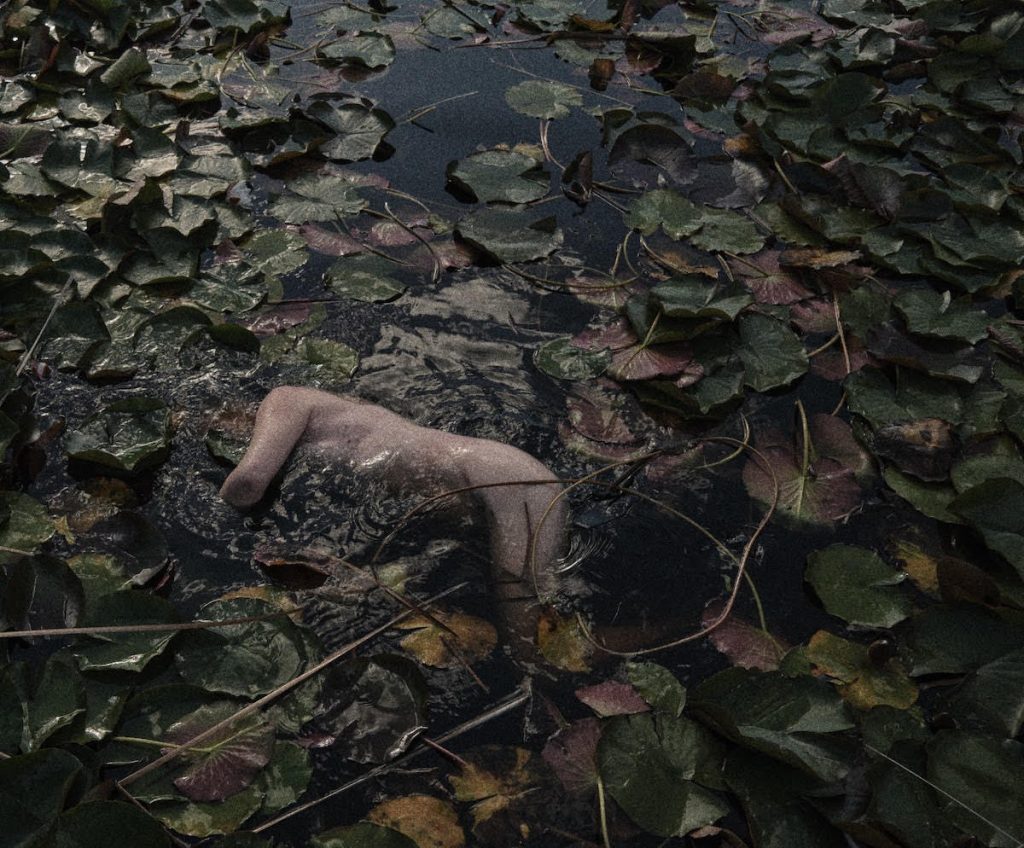
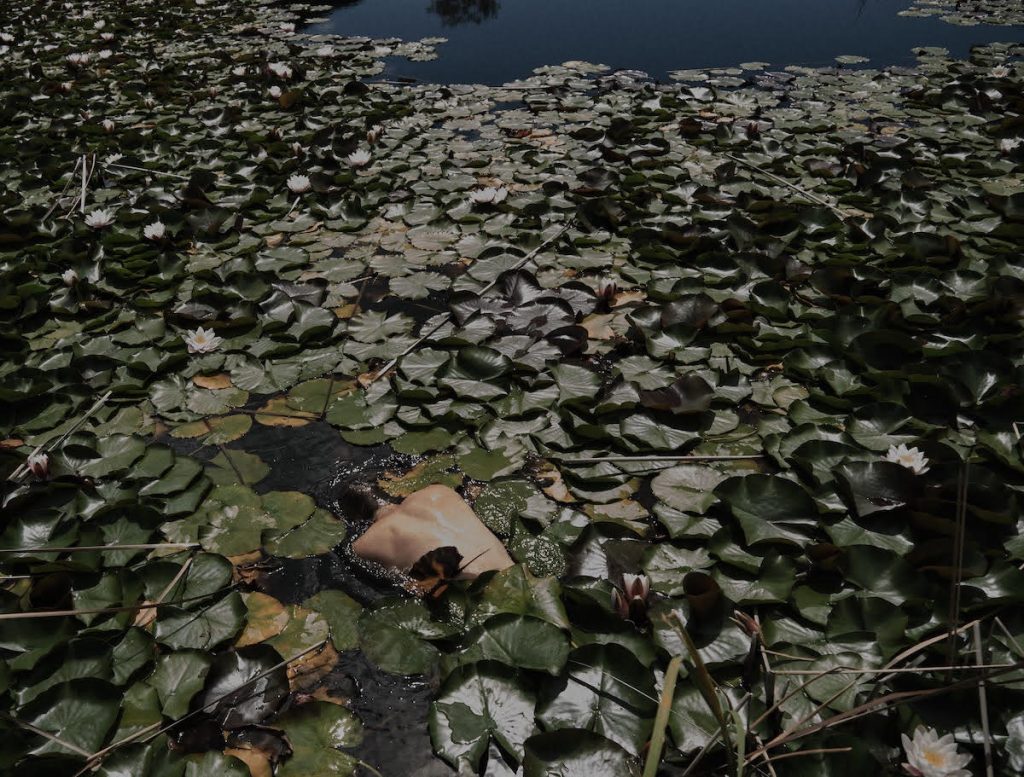

Kimberly Burger
This body of work emerged from my meditations on past selves and the mysteries of how we become as we are. Both forgetting and remembering seem to be equal in the hierarchy of becoming. Walking among the milkwood forests of Bodhi Khaya stimulates one’s imagination of what the surface keeps hidden. What a strange privilege that we have the capacity to dream of these mysteries.
“I thought gravity pulled my mind into the past, stuck in memories. But now I know I can’t trust memories. Some are invented, all are edited. The whole web of who I am — what I’ve seen and done, what skills I’ve found — is nothing but fog.
Gravity pulls me to the future, bits of me falling off along the way. Each of us disappears into the mist of the possible. In our minds, time is gravity’s other side.”
Michael Frame – Geometry of Grief: Reflections of Mathematics, Loss and Life
Leli Hoch
I am an island.
I am a little spit of land,
Yet on my island
I am free; free to preserve
my eccentricities
in a nature reserve
made from nurturing love of
what I choose to be.
I am an island
In an insubstantial sea
after B H H Burns
Lindeka Qampi
Lindeka Qampi was born in 1969 in Bolotwa, South Africa, and currently lives and works in Khayelitsha, a township near Cape Town.
A street photographer, Lindeka first learned the elements of photography through a consortium of photographers known as IlisoLabantu in 2006. Her work captures the most significant aspects of daily township life—of which she is a part—from the private sphere to the euphoria of play. She has documented everyday life from different townships around Cape Town, focusing on a variety of issues: the limited availability of land, cultural differences, creativity, awareness of cultural norms, the value of a shared history, and, most recently, township fashion.
Lindeka’sphotographs are unselfconsciously optimistic, delighting in the vitality of pleasures known and shared by all.
Lindekahas shown her work in exhibitions in South Africa and abroad, including at the Gordon Institute for Performing and Creative Arts, University of Cape Town (2013), Erdmann Contemporary, Cape Town (2013), the Cape Town Art Fair (2013), the Pingyao International Photography Festival, China (2013), Barnard Gallery, Cape Town (2013), AVA Gallery, Cape Town (2012), and the International Africa Festival, Wurzburg, Germany (2010), among others.
“I use environment as a space of breaking silence of all the issues that have been happening in the past. Landscape mirrors our historical background. Bodikhaya was just an eye of all nations for healing from previous traumas.“
Nomusa Mtshali
My quest is to bring to life Titanium (my pseudo persona/ Alter Ego) who actively expresses gender fluidity in ways that remind the society at large of the tide of humanity that bind all gender expressions and sexuality. My quest for belonging and success has brought me against the full force of conservative ideology in South African society and the world. As a queer person of colour, I have found it difficult to feel represented by any single demographic. With my art, I quietly and persuasively challenge narrowly defined concepts like gender and race – with the understanding that no-one fits these boxes perfectly.
Sonya Rademeyer
Earth Bride is the performative union between the artist (Sonya Rademeyer) and the Earth which took place in November 2021.
In her betrothal to the Earth, Rademeyer impregnated both herself and her wedding dress with a red ochre she excavated locally. Walking down the mountainside at Bodhi Khaya Nature Retreat (South Africa) her bridal bouquet consisted of fabric leaflets which she held as an Offering Of Gratitude. These botanical prints of fynbos and other locally foraged leaves were later pinned onto her wedding dress in a second performance, after the artist had distributed these leaves to audience members to co-participate with her.
The performance will culminate in a video piece accompanied by a commissioned musical composition.
The composition will include string sounds created from salvaged Birch trees that have been converted into musical instruments.
Photographers: Kimberly Burger, Lindeka Qambi, Josie Borain, Bronwen Trupp, My Malaika


